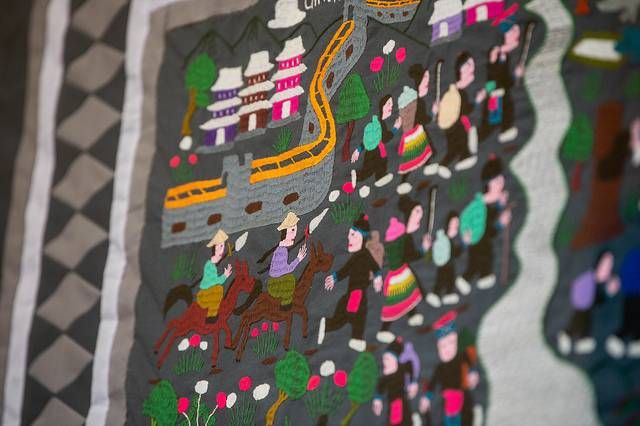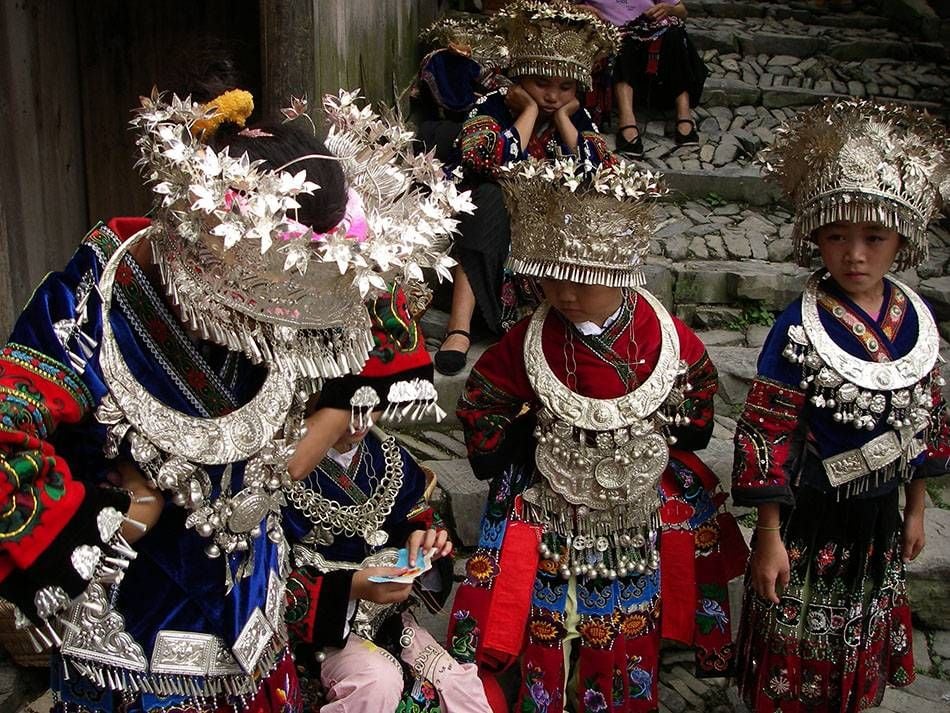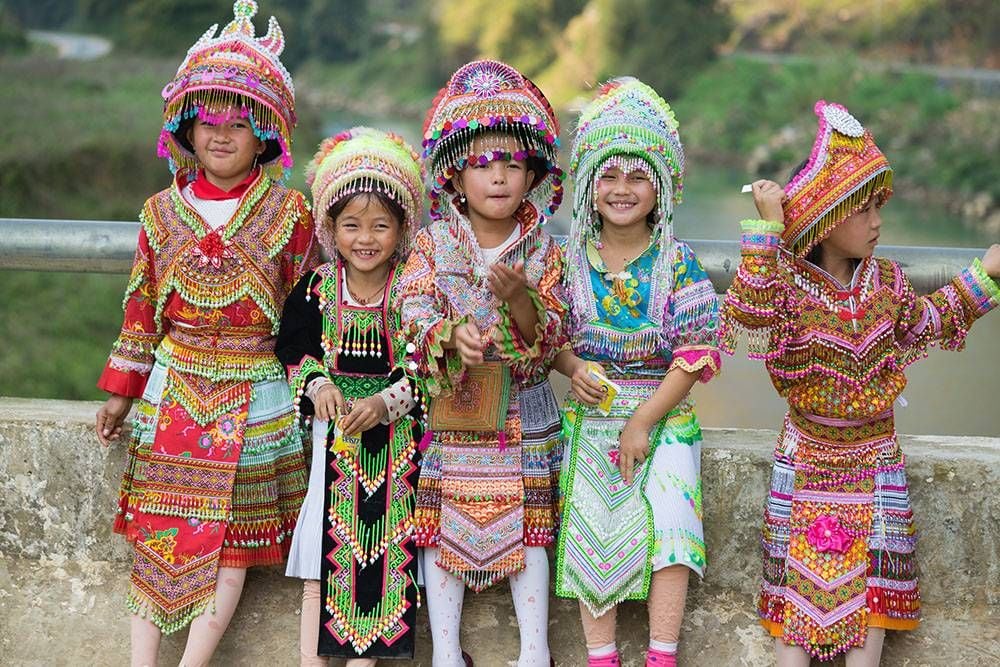Worn Within: What is the story behind Hmong Paj Ntaub?
WATCH: After the Vietnam War, many of the traditions and designs of Hmong Paj Ntaub changed completely. But how and why did it change? Find out by watching!
I'm Susan, and I'm the host of Worn Within. Growing up, I always felt ashamed of my Hmong heritage. Nobody knew how to pronounce my last name or my ethnicity, and it was always a struggle to explain from what country my parents originated. But most of all, I hated wearing my traditional Hmong clothes. The heavy layers of fabric, the loud noises of the silver coins and adornments - it was all too much. As I learned more about the history of my people, though, I realized the value of my traditions and why it's important to tell our stories - and not just the ones that flow out of the Vietnam War, but those that came before that turbulent chapter, too.
THE STORY OF THE HMONG PEOPLE
There are many theories on the origin of the Hmong people. Some historians claim that Hmong people originated from Mesopotamia in the Middle East and migrated to Siberia before making their way to China. Some believe Hmong people were from Mongolia – probably due to the similarities in their names - while others pinpoint China as the place of their origin, believing they arrived before the Yanhuang tribes (the ancestors of the Han Chinese people).
FIRST RECORDING OF THE HMONG
Wherever the specific origin, the earliest known documentation of the Hmong people is around 2700 BC in present-day China, along the Yellow River. Hmong people were called "Miao," as part of the San Miao kingdom (also known as Jiuli/Nine Li tribe). According to Chinese texts, the Yanhuang tribes defeated the San Miao kingdom before they went on to establish themselves as the first dynasty of China.
Whether or not Hmong people had a writing system or a written record of their history remains unknown, but many claim that the Yanhuang tribes erased all prior accounts of their existence and prohibited them from keeping any documentation. After the defeat, the Yanhuang tribes exiled the Hmong people to different regions in China. "Miao" became a derogatory label, meaning barbaric or savage, and was given to all the minority groups that weren't a part of the Yanhuang tribes.
ESCAPING IMPERIAL CHINA

This exile was not the last appearance of the Hmong people in China's history. In the mid-1600's, the Ming and Qing dynasties (now Imperial China) began limiting their freedom, and a series of rebellions broke out. Unfortunately, things did not go as planned, and by the mid-1800s, many Hmong families fled to the foothills of Laos, Vietnam and other neighboring countries.
As for the Hmong who remained in China, they eventually became one of the four minority groups who made up - can you guess? - the "Miao," an official ethnicity of China. This recognition formalized in 1949.
Make no mistake, however, Hmong Miao people born in China today are very proud to be called "Miao." As for the Hmong people outside of China? Not so much. They prefer "Hmong."


THE FRENCH INDOCHINA PERIOD
After escaping Imperial China, Hmong people faced even more oppression. Around the same time of their relocation, France began colonizing Southeast Asia. By 1887, the colonized territories of present-day Vietnam, Laos and Cambodia became French Indochina.
The French authorities heavily taxed and discriminated against the Hmong people during this French Indochina period, ultimately leading up to the Vietnam War. The resulting conflict divided the Hmong people into two groups during the war - those who rallied behind France and America, and those who supported the communist forces.
And with that, this brings us up-to-speed with the episode (Did you watch it yet?) and America's first encounter with the Hmong people.
Want to learn about other approaches to traditional clothing? Check out more episodes of Worn Within.
Production Team: Susan Thao, Carrie Clark, Eric Pagel, and Kristen Blekum
Illustrations and Graphics: Maria Ahrens and Ben Malley

This story is made possible by the Arts and Cultural Heritage Fund and the citizens of Minnesota.
In the shadows of the Vietnam War, the CIA organized a clandestine operation aimed at halting the spread of communism deeper into Southeast Asia. As part of the mission, they trained Hmong soldiers, who played a critical role in intercepting the flow of supplies to Viet Cong outposts along the Ho Chi Minh Trail. Discover more about the operation from the Hmong men and women who risked their lives in America's Secret War.
Kao Kalia Yang, author of The Song Poet and The Latehomecomer, reflects on her Hmong roots and how her heritage has shaped her writing in this story from the event series, Art Is…
Relish host Yia Vang spends some quality time in the kitchen learning the secrets of his mother's delicious Hmong-style steam buns. Prepare to be delighted – and hungry.
